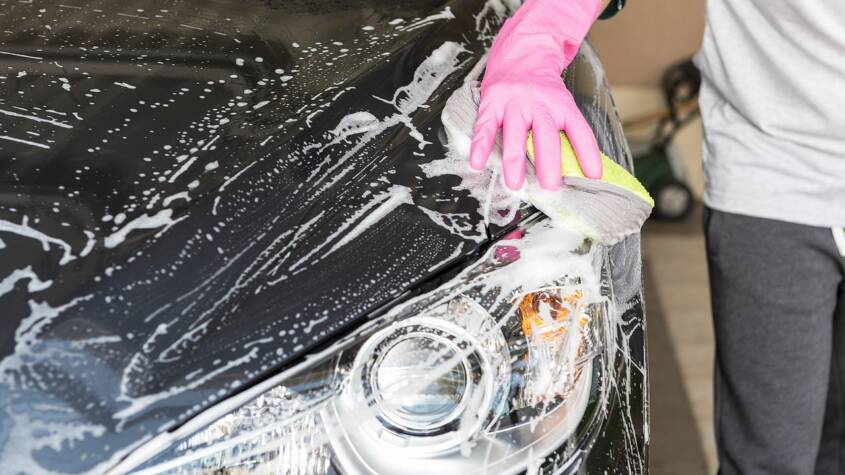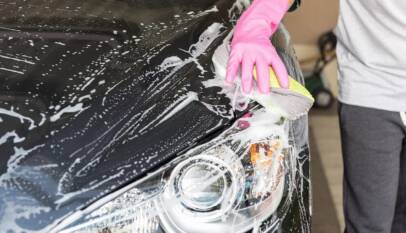
Paint protection film (PPF) is a clear, durable layer applied to a vehicle’s surface to shield the paint from scratches, chips, and environmental damage. It helps maintain a car’s appearance by preventing damage caused by road debris and harsh weather conditions. This protective film is commonly used by car owners who want to keep their vehicles looking new without frequent touch-ups or repairs.
The film is designed to be virtually invisible, preserving the original paint color and finish while providing a robust barrier. It is often self-healing, meaning minor scratches can disappear over time, which adds to its appeal for daily drivers and enthusiasts alike.
With a range of thickness options and finishes, paint protection film can be tailored to fit various vehicles and user needs. Understanding how it works and its benefits can help vehicle owners decide if PPF is the right investment for preserving their car’s value and appearance.
Understanding Paint Protection Film
Paint protection film is a clear, durable layer applied to a vehicle’s painted surfaces. It serves to shield against damage from everyday hazards while maintaining the original look of the paint. Different types and qualities of film offer various levels of protection and finish.
What Is Paint Protection Film?
Paint protection film (PPF) is a transparent urethane material designed to cover and protect automotive paint from scratches, chips, and stains. It is also called clear bra or clear film.
PPF is typically applied to high-impact areas such as the hood, front bumper, side mirrors, and fenders. The film is resistant to abrasion and can self-heal minor scratches when exposed to heat.
Manufacturers cut each film to fit specific vehicle models or allow installers to customize shapes on-site. Installing PPF requires professional skill to avoid bubbles, wrinkles, or alignment issues.
How Paint Protection Film Works
PPF acts as a physical barrier between the environment and the vehicle’s paint surface. It absorbs impacts from road debris, gravel, insects, and other particles that would otherwise cause chips or scratches.
The film’s urethane composition provides flexibility and strength. It stretches over curves and contours without losing integrity.
Some PPF products have self-healing properties thanks to a topcoat layer that softens under warmth, allowing minor scratches to fade over time. This maintains a smooth, clear appearance without frequent polishing.
The films are also resistant to UV rays, preventing paint discoloration and degradation caused by sun exposure.
Benefits of Paint Protection Film
PPF reduces the need for touch-ups and repainting, protecting resale value by maintaining original paint condition. It helps prevent damage that would lead to costly repairs.
The film’s transparency preserves the vehicle’s aesthetics while offering a layer of defense. It can also resist staining from bird droppings, road tar, and tree sap.
Self-healing properties reduce visual wear and tear, lowering maintenance efforts. PPF installation can be limited to vulnerable sections or cover the entire vehicle for full protection.
The film is relatively thin, so it does not change the texture or appearance of the car’s paint finish.
Types of Paint Protection Film
There are two main types of PPF: standard and ceramic-enhanced. Standard film is clear urethane designed for impact resistance and basic UV protection.
Ceramic-enhanced PPF adds a hydrophobic coating that repels water, dirt, and oils, improving cleaning ease and enhancing gloss. This type typically costs more but provides higher durability.
Other variations include matte or satin finish films for aesthetic customization without sacrificing protection.
Thickness generally ranges from 6 to 8 mils (0.15 to 0.20 mm). Thicker films provide more impact resistance but can be slightly less flexible.
Choosing the right type depends on the vehicle’s use, environment, and the owner’s budget or preferences.
Application and Maintenance
Applying paint protection film (PPF) requires careful technique, whether done by a professional or as a DIY project. Maintaining the film involves specific cleaning methods and knowing how to address common problems to keep the film effective.
Professional vs. DIY Installation
Professionals have access to specialized tools and controlled environments, enabling precise film alignment and reducing errors like bubbles or wrinkles. They also pre-clean and decontaminate the vehicle surface thoroughly, ensuring better adhesion.
DIY installation is cost-saving but demands patience and skill. The user must clean the surface rigorously, use slip solutions, and trim the film accurately. Mistakes like dust inclusion or improper stretching can cause premature lifting or visible flaws.
For best results, professionals are recommended for full-vehicle or complex curves, while DIY suits smaller, flat areas. Preparation and following instructions closely are vital regardless of method.
Proper Care and Cleaning
Cleaning PPF should be done with mild soap and water, avoiding abrasive materials and harsh chemicals that can degrade the film. Use a soft microfiber cloth or sponge to prevent scratches.
Washing frequency depends on environmental exposure but generally once every one to two weeks keeps contaminants from bonding. Avoid automatic brushes that might cause swirl marks.
Waxing is permitted if using non-abrasive, PPF-safe products. Avoid silicone-based or solvent-heavy waxes that can damage the film’s surface or edges.
Common Issues and Solutions
Bubbles under the film usually result from trapped air or moisture during installation. Professionals use heat and squeegees to remove them, but minor ones may self-resolve over time.
Yellowing or discoloration is often due to poor-quality films or UV exposure without proper maintenance. Replacing old film is necessary when degradation occurs.
Edge lifting occurs when dirt or improper adhesion causes film to peel. Keeping edges clean and limiting high-pressure water near seams can prevent this issue. Reinstallation or edge sealing may be required if lifting happens.
Kongo Tech Leading Innovation in African Technology Solutions
Kongo Tech specializes in developing innovative digital solutions tailored to African mark…





